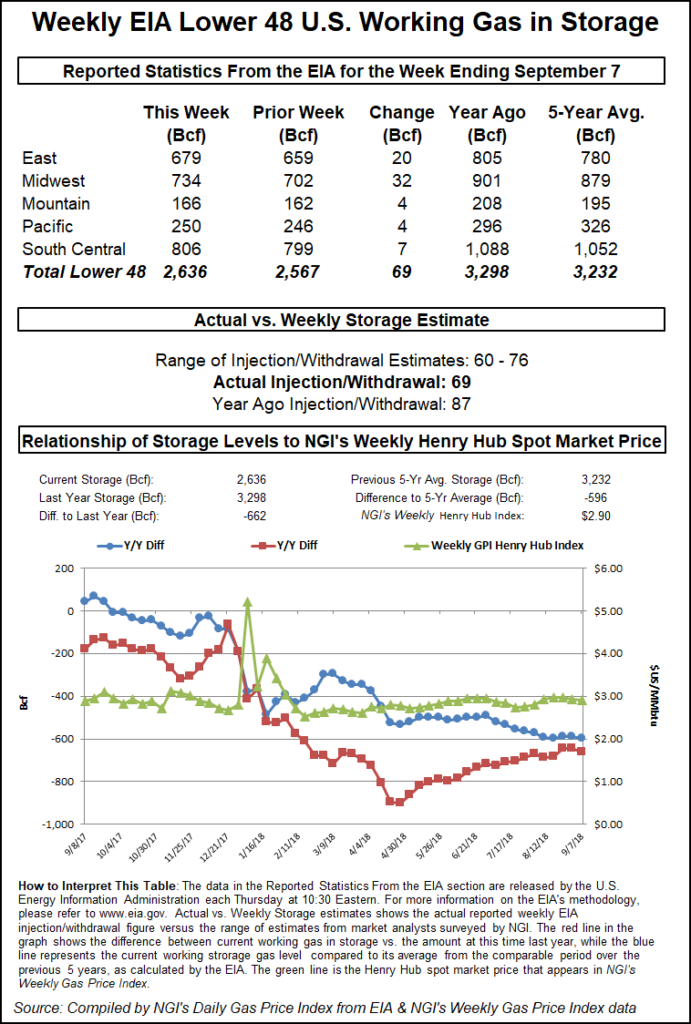Markets | NGI All News Access | NGI Data
No Surprises From EIA Storage as Market Eyes Storm Impacts; Natural Gas Futures Steady
As potential demand destruction from Hurricane Florence continues to command the natural gas market’s attention, the Energy Information Administration (EIA) reported a 69 Bcf build for the week ended Sept. 7 that barely moved the needle.

After probing above $2.850 earlier in the morning, the October Nymex futures contract pulled back slightly on the news, dropping about a penny as the number crossed trading desks at 10:30 a.m. ET. But by 11 a.m. ET, the October contract was back up to around $2.844, up about 1.5 cents from Wednesday’s settle.
The 69 Bcf injected into Lower 48 underground storage for this week’s report reflected the impact of the Labor Day holiday, lower than both the 74 Bcf five-year average and the 87 Bcf recorded in the year-ago period.
Prior to the report, a Bloomberg survey had produced a range of 59-76 Bcf, with a median of 65 Bcf. A Reuters survey ranged from 60-76 Bcf with a median of 68 Bcf. Intercontinental Exchange futures had settled Wednesday at a 65 Bcf injection.
“This print is, of course, artificially loose due to the Labor Day holiday, where we saw the loosest weather-adjusted burns of the summer,” said Bespoke Weather Services, which had called for a 68 Bcf build. “We accordingly expect a tighter print next week,” but the market is still on track for end-of-season inventories “north of 3.35 Tcf.
“This print confirms recent production growth too, essentially indicating prices are relatively fairly priced,” the firm added. EIA’s report should firm up resistance around $2.88, “with $2.75 in play on any major Florence demand destruction.”
Total working gas in underground storage stood at 2,636 Bcf as of Sept. 7, 596 Bcf (18.4%) below the five-year average and 662 Bcf (20.1%) lower than year-ago inventories, according to EIA. Inventories also currently sit below the five-year historical range, EIA noted.
By region, the Midwest posted the largest net build for the week at 32 Bcf, followed by the East, which injected 20 Bcf. The Mountain and Pacific regions injected 4 Bcf each during the period. In the South Central, a 9 Bcf build for nonsalt offset a 1 Bcf withdrawal from salt, according to EIA.
This week’s report is the first to publish estimates based on a new sample selected for EIA’s weekly storage report. On Monday, EIA released revised estimates for the eight weeks covering July 13-Aug. 31 to gradually phase in the new sample.
The established sampling and estimation methodologies for the report have not changed, EIA said. Estimates produced from the sample are to reflect the most recent version of the EIA-912 form, which requires storage operators in the South Central region to separately report the volume of working natural gas held in salt facilities and nonsalt facilities, according to the agency.
© 2024 Natural Gas Intelligence. All rights reserved.
ISSN © 1532-1231 | ISSN © 2577-9877 |
